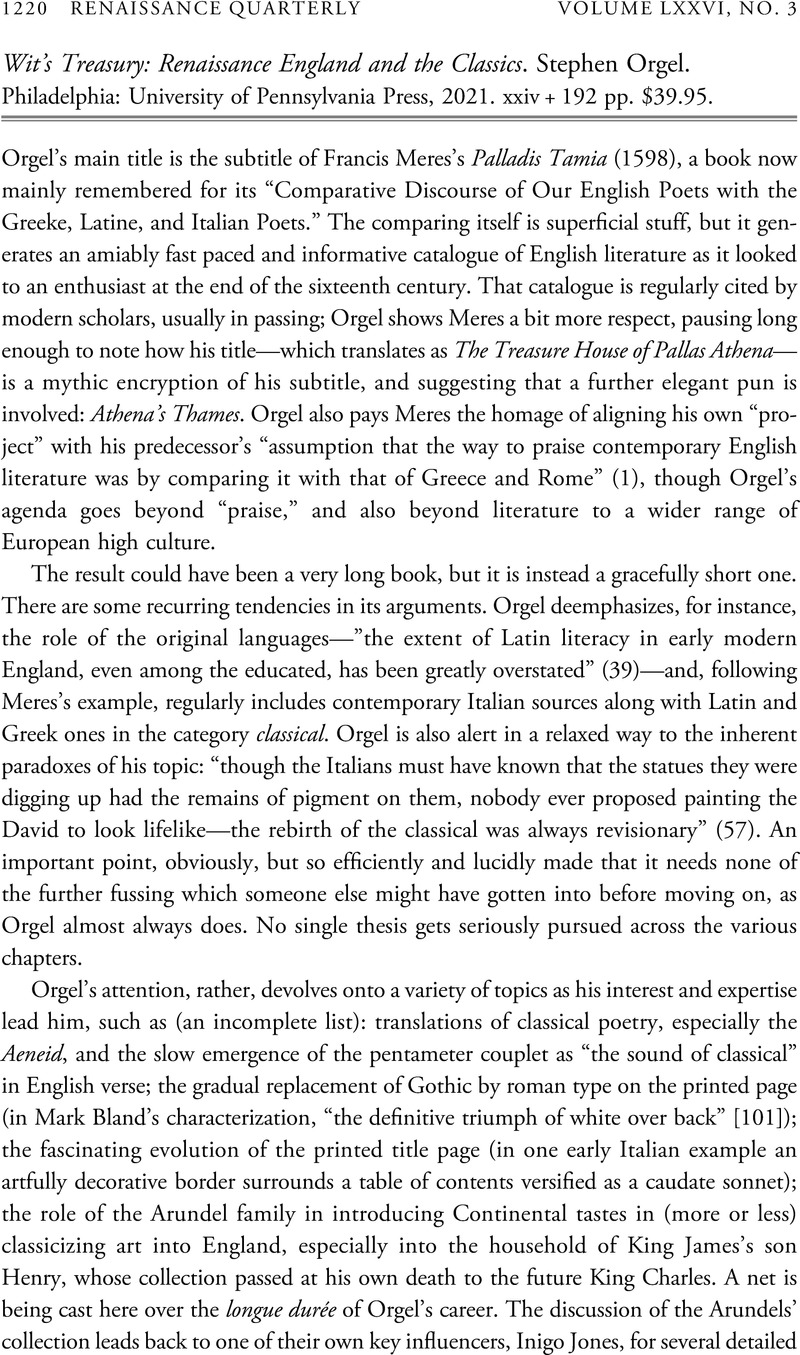No CrossRef data available.
Article contents
Wit's Treasury: Renaissance England and the Classics. Stephen Orgel. Philadelphia: University of Pennsylvania Press, 2021. xxiv + 192 pp. $39.95.
Review products
Wit's Treasury: Renaissance England and the Classics. Stephen Orgel. Philadelphia: University of Pennsylvania Press, 2021. xxiv + 192 pp. $39.95.
Published online by Cambridge University Press: 15 November 2023
Abstract
An abstract is not available for this content so a preview has been provided. Please use the Get access link above for information on how to access this content.

- Type
- Review
- Information
- Copyright
- Copyright © The Author(s), 2023. Published by the Renaissance Society of America



